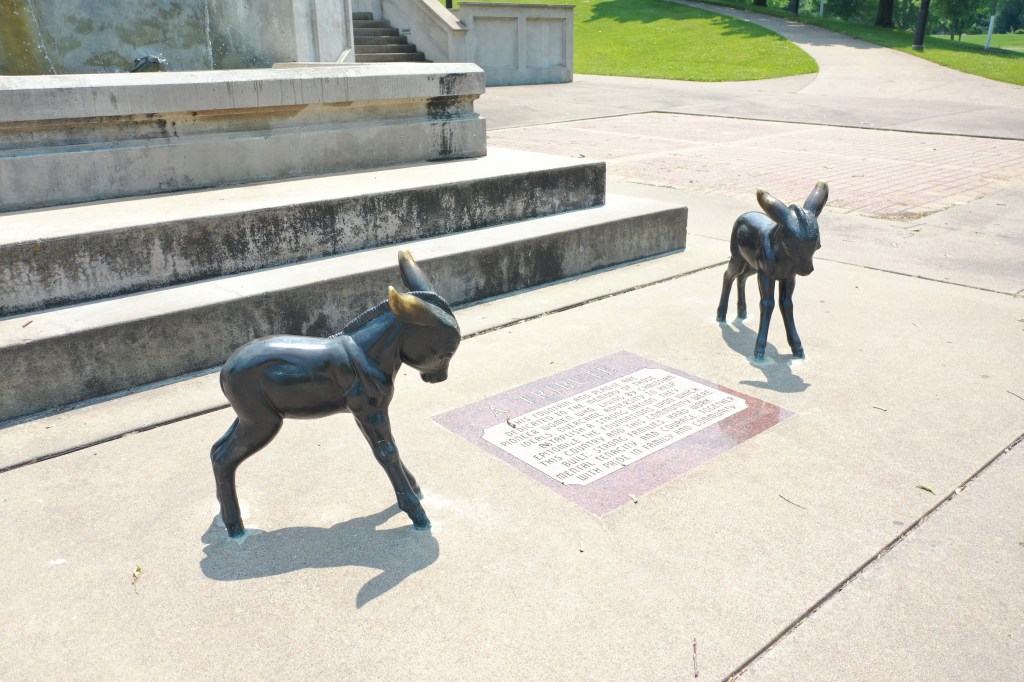
Walking Tour Stops 20-27
Complete Narration
Persian Gulf War
The Persian Gulf War demonstrated America’s overwhelming military capability when a U.S.-led coalition of 35 nations liberated Kuwait from Iraqi occupation in Operation Desert Storm. The conflict, marked by precision airstrikes and a decisive 100-hour ground campaign, saw nearly 700,000 U.S. service members deploy to the Middle East, with 293 making the ultimate sacrifice while establishing a new standard for modern warfare.
9/11 Monument
On September 11, 2001, America endured the deadliest terrorist attack on U.S. soil when nineteen hijackers crashed commercial airliners into the World Trade Center towers, the Pentagon, and a field in Pennsylvania, claiming 2,977 innocent lives including 343 firefighters and 72 law enforcement officers. This tragic day forever changed our nation, leading to America’s longest war and demonstrating both the devastating reach of global terrorism and the extraordinary courage of first responders who ran toward danger to save others.
Pavilion
The Lions Club Pavilion stands as a welcoming gathering place within Memorial Park, providing visitors a sheltered space for reflection, education, and community events while surrounded by the park’s historic memorials. This pavilion, made possible through the dedication of local Lions Club members, serves as a symbol of the community’s commitment to honoring and remembering our nation’s veterans.
To book an event at the Pavilion, visit Book Your Event.

Pioneer Farmers
In 1855, the first pioneer settlers, including Collins Bishop, George Shelley, and James Broughton, ventured into the Trempealeau Valley with fifteen cattle and a vision of establishing homes in this wilderness, with Bishop breaking the first cultivated land in what would become Arcadia. These early farming families carved homesteads from the untamed landscape, building log cabins and barns that gave the settlement its first nickname of ‘Barn Town,’ while establishing the agricultural foundation that would help the region prosper.
The man’s face is sculpted after Ron’s father, and the boys’ faces are sculpted after his grandsons’.


James Reed
James Reed, born in Kentucky to Scotch-Irish pioneers, became the first permanent settler in Trempealeau County and founder of Trempealeau, establishing his home along the Mississippi River in 1840 after serving in the War of 1812 and working for the American Fur Company. A skilled frontiersman known for his expertise in trapping, trading, and marksmanship, Reed served as the first La Crosse County judge and was respected for his fairness among both settlers and Native Americans, speaking several Indian dialects and French while adapting to frontier life.
He is also the Great, Great, Great, Great Grandfather of Ron Wanek, Founder and Chairman of Ashley Furniture Industries.
Pig & Donkey Monuments
Rub the pig’s nose for good luck.


Tribute to the Pioneer Women
Among the first pioneer women in Arcadia was Catherine ‘Aunt Catherine’ Goddard Smith, who arrived in 1852 and demonstrated remarkable strength of character by helping establish the area’s first church and school while running a boarding house. These pioneer women faced harsh conditions and challenging terrain alongside their families, bringing civilization to the wilderness through their determination, humility, and generosity, as they helped transform the untamed landscape into a thriving community.
The woman’s face is sculpted after Ron’s mother, and the girls’ faces are sculpted after his granddaughters’.


Millennium Amphitheater
The Millennium Amphitheater, dedicated in 2000, serves as the crown jewel of Memorial Park. Surrounded by the General’s Overlook and commemorative brick walkways honoring veterans and loved ones, this stunning venue provides the perfect setting for concerts, ceremonies, and more against the backdrop of the park’s memorials.